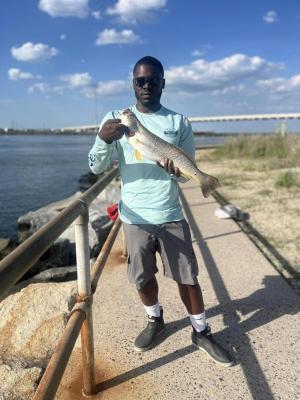It seems every time I go fishing, I see people make basic fishing mistakes. They have the wrong tackle for the job at hand, the wrong sinker, the wrong rig, the wrong reel on the wrong rod or they have tied a terrible knot.
Let’s begin with the knot. Some of the ones I have seen on rigs I have pulled up from the rocks at Indian River Inlet or from wrecks while bottom fishing are, if nothing else, creative. Some have one granny knot tied on top of another four or five times. Others have a series of loops around the line and then a granny knot to secure the tangle.
You really only have to master a couple of knots to get you through most fishing situations. First is the clinch knot. I use this to tie everything to my line or leader. It is easy and quick to tie. Back in the day when I was a jetty fisherman, I could tie the clinch knot in the dark with wet and slimy hands.
All you have to do is go online and ask for the clinch knot, and there will be several choices of sites where someone will teach you how to tie this knot.
The next knot you should master is the perfection loop. I use this at the top of my bottom rigs. The dropper loop is the knot I use when making bottom rigs to hold the hooks or jigs. At the bottom of the rig is the surgeon’s loop to hold the sinker.
When joining the braid running line to a monofilament or fluorocarbon leader, I use an Albright knot. My son Ric uses a slim beauty knot. Both will do the job.
As before, you can find all of these knots carefully explained on the internet.
Indian River Inlet is where I see the wrong type of tackle used; the end result is usually the loss of the rig or lure. If you decide to bottom fish at the inlet, you want to present your bait on the bottom, but you don’t want to leave it there.
I have been fishing the inlet since the 1950s and have left my share of rigs and bucktails on the bottom, but I have learned along the way how to cut my losses. First, when bait fishing, I try to keep the line to the rig as close to 90 degrees from the water as possible. This requires a rod long enough to reach out over the water and deposit the bottom rig out far enough to reach deep water. You want to use a bank sinker just heavy enough to hold bottom, but not so heavy you can’t move it without having it decide to stay where it is. If the sinker is too light, the current will pull it into a crevice, and there it will stay.
I fish a one-hook rig at the inlet. I am fishing for tog or sheepshead, and I use a Virginia-style hook. Circle hooks do not work well with tog because a tog does not try to swallow the bait. It crushes the bait first, spits out the shell and the hook, and then swallows what’s left. All of that takes less than one second. This is why you have to set the hook and crank like heck just before you feel a tog bite.
One style of bait fishing that does work well with circle hooks is drifting sand fleas for striped bass. I put at least two sand fleas on a hook and drift them along the rocks from the sidewalk. Even back in the day when I was young and nimble (well, at least I was young), I fished from the sidewalk because I moved from the southside campground, where we had our tent, to the end of the south jetty and back again. In those days a 5-pound rockfish was considered big.
Head boats are another location where I encounter people with the wrong tackle. My last trip on the Angler out of Ocean City, Md., I had the pleasure of fishing next to a man using a spinning outfit best suited for a freshwater pond. It took 9-ounces of lead to hold bottom, and that much weight was too much for his spinning outfit, so he was constantly cussing while trying to reel in anything he hooked. And he kept hooking big bluefish. Finally, a mate cut up one of the blues, baited up one of the boat’s bottom rigs, and he began to catch sea bass that were better suited to his spinning outfit.
If you are new to fishing, please go to any of the good tackle shops we have in this area. Explain what you will be fishing for, and they can help you select the proper tackle.












































